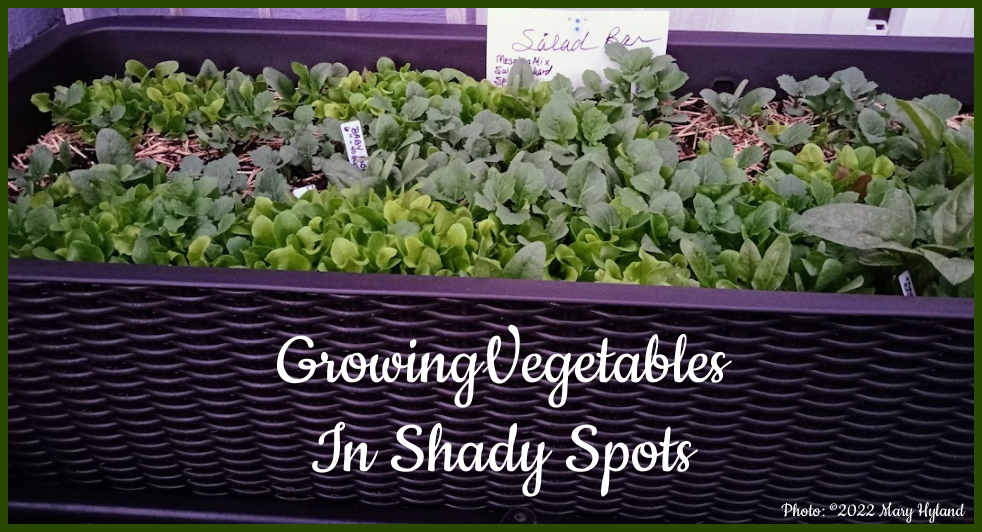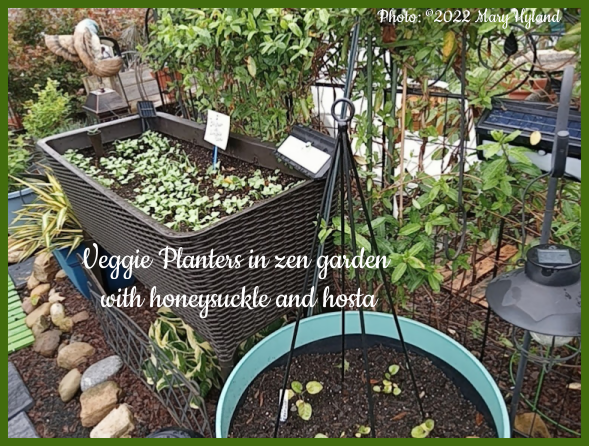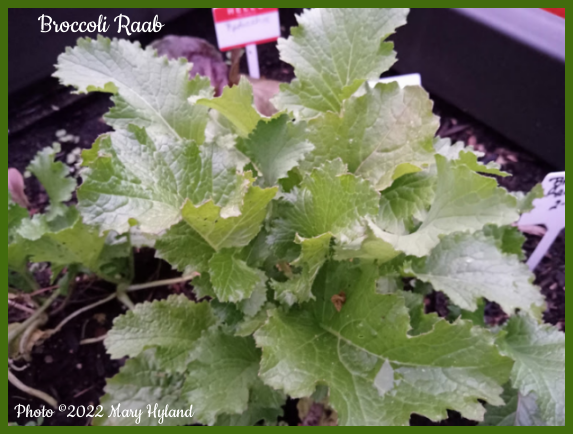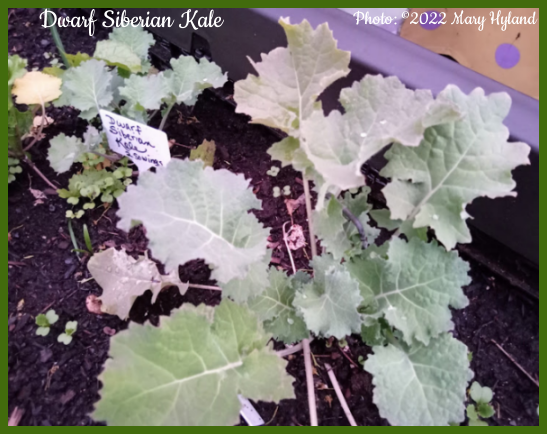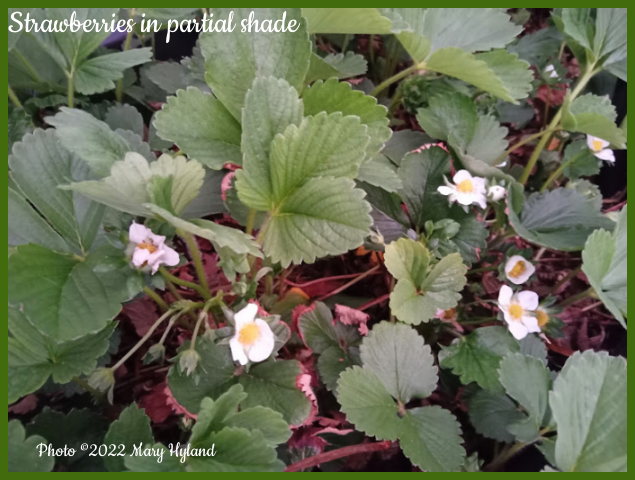| Morning sun with afternoon shade is
the best environment for many plants. There are many edible plants that
grow well in partial shade, dappled shade, or in as little as 3-6 hours
of sunlight a day. The raised planter above is 2x4 ft and is elevated on
legs. I have several of these planters on a partially shaded patio, and
along my fence lines. These planters get a good mix of sun and shade.
If you have a yard that has a few
partially shady areas, don't hesitate to plant food there. You can plant
all of the sun-lovers in the sunshine and make use of the shady areas
for cool weather leafy salad fixin's and root crops. No space should go
unplanted. But no vegetable that I know of, will grow in full shade.
Vegetables that fruit from a blossom, such as cucumbers, tomatoes,
eggplant, peppers, and squash are the least tolerant of shady areas.
Many cool weather crops can be
stagger-seeded every few weeks for crops spring through fall. This is
especially easy to do in raised garden beds. Mixed, closely-planted
leafy crops make great salad varieties in containers. I mix my varieties
and broadcast the seeds. No need for rows, and I don't measure for
spacing. I pluck as the young leaves reach about 3 inches, leaving the
root. Most greens will re-grow from the root. I begin some seeds indoors
in February, but as soon as the soil in my raised beds is workable, I
begin to scatter seed outdoors in prepared planters, and cover with a
thin layer of soil. Seeds I plant for leafy crops in March become my
first members of my salads, stews and soups in April.
My raised, elevated beds are
approximately 2x4 ft. As you can see, this box contains a large number
of different leaf lettuces, chard and spinach, closely planted in early
spring. Many of these plants are available as seedlings. This box was
seeded in early March. First crop of greens was harvested in April.
A large clean, weedless and leafy
salad bar in containers is easy. When leaves are the size you
like, Just clip young leaves when you need them. No need to grow crops
that form heads or let those grow into heads. Young leaves are much
sweeter tasting, and more tender if you are cooking with them. Mixing
your varieties of greens in one big box makes for an instant salad at
trimming time. Pluck and Go. You're more likely to eat greens every day
if you plant near the kitchen or patio door. You won't be able to resist
a fresh-picked salad for lunch or dinner. My leafy greens look very
pretty closely planted because they're the first living things I see in
spring, aside from evergreens. The red and rainbow swiss chards planted
with lettuces looks beautiful when they're coming up in April. And
"look, Ma, No Weeds or snails!". Those common scourges for
some gardeners with shady plots are eliminated.
Containers can be sown and grown on
the patio, terrace, in the courtyard or on a balcony that gets a
combination of 4hrs.+ sun and shade in the afternoon. Containers look
beautiful in urban and small-space settings. Raised beds elevated on
legs add an ornamental quality when placed in the centers of the edges
of your patio or terrace, with large and ornamental planters and pots
filled with veggies around them at ground level. I am in constant battle
with marauding rabbits, so I grow my food in raised, elevated beds.
Place a small garden table on the
patio to hold a pair of scissors for clipping herbs and leaves, a
weather-proof bowl for harvesting, a bowl for salad, utensils and
unopened salad dressings. Lunch, or your relaxing evening snack can be
salad or veggies and dip on the patio or at a bistro table in your
gardens.
Many veggies will grow well
in-ground, in raised and elevated growing beds and in decorative large
pots. For small space and urban gardens, containers add style, neatness,
and creates more growing space.
- Cole crops are
tolerant of partial sun or partial shade. Broccoli, cauliflower,
kohlrabi, turnips, kale, and rutabagas will grow well with less than
a full day of sun, but may take longer to mature. Cabbage will
also grow in shade, but they may not form tight heads.
- Root crops such
as radishes, carrots, potatoes, and beets can grow in as little as
3-4 hours of direct sun with light or dappled shade for the rest of
the day.
- Leafy greens
such as lettuce, arugula, kale, bok choy, and chard are happy with
just a few hours of sunshine each day. Keeping them out of
midday sun can prevent their tender leaves from wilting.
- Climbing vegetables
do well in areas that are shaded in the morning but sunny by
afternoon. Cucumbers and pole beans will climb up supports into
the sunshine.
- Perennial vegetables
such as rhubarb, asparagus, and Jerusalem artichokes can be grown in
partial sun or partial shade. These will die down in winter and
return in the spring. Scallions and garlic chives are perennials
that do well in partial shade, too.
- Vegetables that are susceptible
to bolting, like broccoli, cauliflower, and spinach, can benefit
from being grown in partial sun, particularly in hotter climates.
- For areas that receive morning
sun then afternoon shade, try vegetables such as celery, carrots,
and bush beans.
Growing Guides for
shade-tolerant vegetables and herbs from Old Farmer's Almanac
Fruits
Sour cherries actually grow
better in shady plots, as they don’t need the sun to
sweeten them. Plus, they look very pretty when trained on a
fence or wall. I grow tart and sweet cherries that I combine
to make jams.
Currants and
gooseberries also grow and crop quite well in partial
shade. Train them as espaliers
against a wall to
ensure the branches are well-spaced and that light can reach
all parts of the plant.
Cane fruits like blackberries and raspberries can also
grow in some shade,
but will fruit better with more sun. My everbearing
raspberries grow in partial shade against a wall, and do
very well.
Rhubarb is another great
crop for a shady spot.
For fruit trees, pears
and plums are your best bet. Pears do need a few hours of
sun, preferably in the afternoon. Plums are a great
choice for a landscape that gets morning sun and afternoon
shade. Just remember, many varieties of pear and plum trees
need a cross-pollinator (2 trees of different varieties) to
fruit, so you may need more than one tree. I grow all
of my fruit trees in large, ornamental pots to make it easy
to re-arrange, and they're all dwarf self-pollinating varieties with
full-sized fruit, kept at a height that's convenient for
care and harvesting.
Alpine strawberries are
much tougher than average strawberries. Try a variety called
‘Alexandria’ for shade.
My everbearing strawberries
in partial shade do fine. They are growing in raised,
elevated beds to foil the voracious, marauding rabbits.
What NOT
to Grow in Shade
Heat-loving crops such
as tomatoes, peppers, eggplant, squash, and melons just
won’t grow without full sun.
They need hot, sunny days in order to produce fruit.
Most fruit trees need lots
of sun. Citrus, peach, nectarine, apple, and apricot
trees all need direct sun and won’t thrive in shade.
Tips for Growing in Shade
In all but the hottest
climates, use the sunniest parts of the garden to start
seeds in a seed bed or in pots or modules, then transplant
them to another bed once they are larger and more able to
cope with shade. Using grow lights indoors can give
early-sown seedlings a boost.
Reflect any available
light into shadier parts of the garden by painting walls and
fences white, or use reflective surfaces such as shiny metal
or foil balls in the garden. Shiny decor like gazing
balls repel aphids and look beautiful as the focal point in
the beds. A birdbath or other water feature looks pretty and
reflects sun from the water.
Slugs and snails often
lurk in shady areas of an in-ground garden, so use traps and
delay laying mulches until the weather warms up. Raised
beds eliminates that scourge.
Leave plenty of space
between plants to help maximize light penetration. I
often do not do this with my greens.
You may not need to
water as often when gardening in the shade, since less
moisture evaporates. Take care when gardening directly under
trees. Their roots tend to compete for available water and
nutrients and their leafy canopy will block some rainfall
from reaching the ground.
Grow dwarf or bush
varieties or grow on trellises for more food per foot.
Article ©2022
marysbloomers.com
Sources:
Wikipedia
Old Farmer's Almanac
Design, graphics,
articles and
photos ©2022 marysbloomers.com™
All rights reserved.
|
